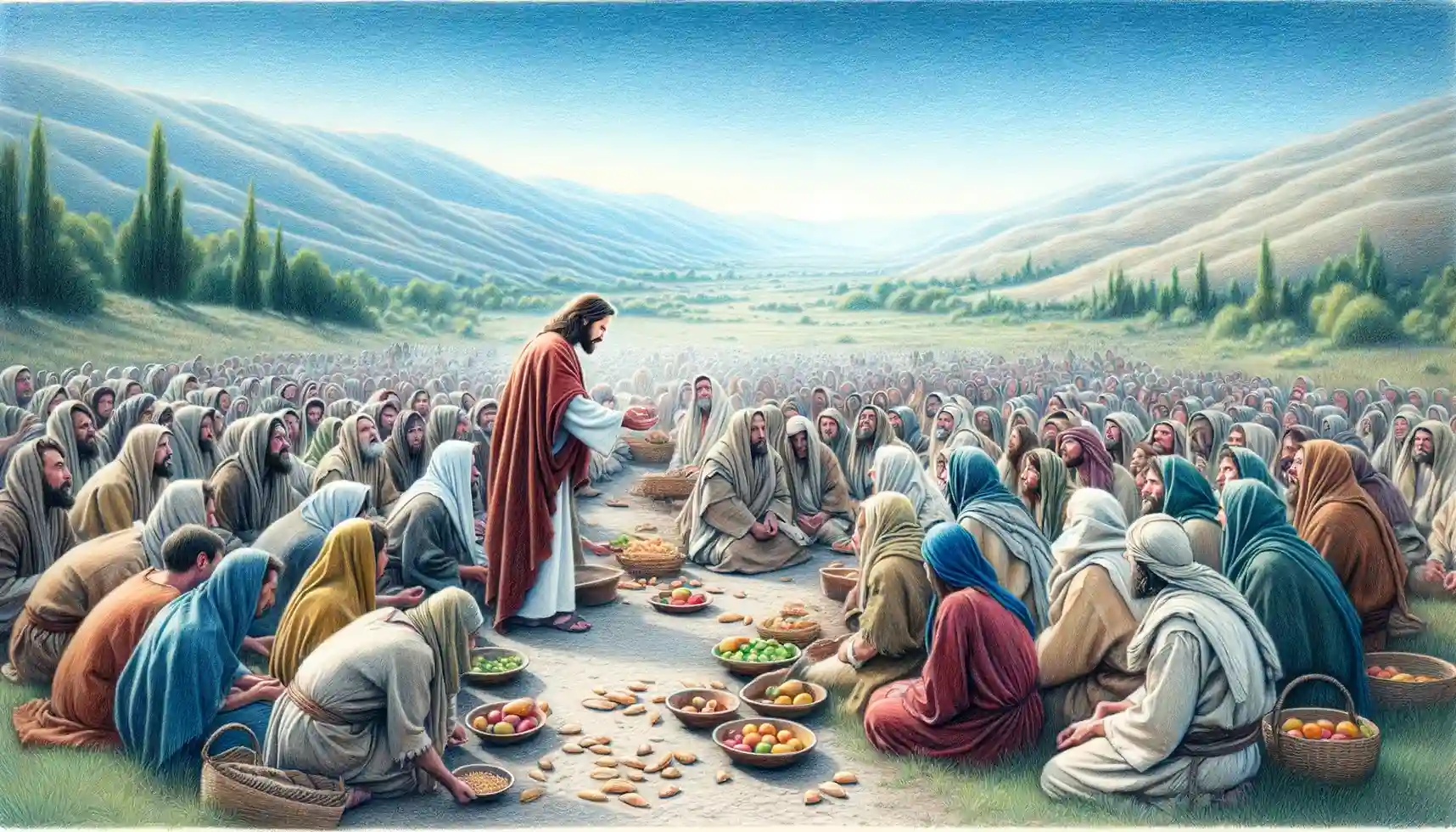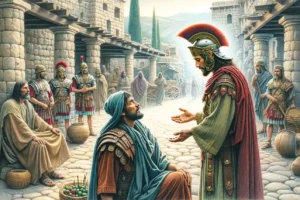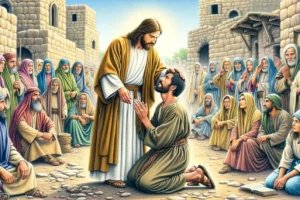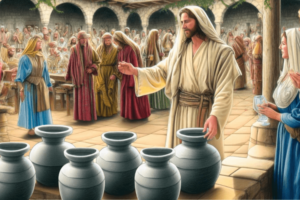
The Feeding of the 5,000
The Feeding of the 5,000 is one of the most celebrated miracles of Jesus Christ, documented in Matthew 14:15-21. This miraculous event showcases Jesus’ compassion and divine power, as He feeds a vast multitude with just five loaves of bread and two fish. This narrative not only underscores the provision and abundance found in Christ but also highlights His concern for both physical and spiritual nourishment. Here are some quick facts about this miraculous event:
- Biblical Reference: The story is recounted in Matthew 14:15-21, as well as in other Gospel accounts.
- Participants: Jesus, His disciples, and a large crowd of at least 5,000 men, not counting women and children.
- Setting: The miracle takes place in a secluded area, far from nearby villages.
- Provision: Jesus uses five loaves and two fish, provided by a boy, to feed the entire crowd.
- Miracle Details: Jesus blesses and breaks the loaves, then the disciples distribute the food, which miraculously multiplies to satisfy everyone with leftovers collected afterwards.
- Symbolic Meaning: This event is rich in symbolic meaning, representing Jesus as the Bread of Life, who satisfies the deepest needs of humanity.
Context and Background
The Feeding of the 5,000, as recorded in Matthew 14:15-21, occurs in a context of both compassion and challenge. This event follows the news of John the Baptist’s execution, a moment when Jesus sought solitude, possibly to mourn. However, the crowds, seeking His teachings and healings, follow Him. The setting is remote, underscoring the logistical challenge of feeding such a large group and highlighting Jesus’ miraculous provision.
Theological Insights
1. Jesus as the Provider: This miracle is a profound demonstration of Jesus’ role as a provider. By feeding thousands with scant resources, He mirrors Old Testament provisions such as the manna in the wilderness, positioning Himself as the new Moses. This act reinforces His identity as the Bread of Life (John 6:35), symbolizing His ability to meet not only physical but also spiritual needs.
2. The Significance of ‘Bread and Fish’: The use of bread and fish has deep symbolic meanings. Bread, a staple in the diet of the people, symbolizes sustenance and life. Fish, which were often dried and traded, symbolize provision and industry. Together, they underscore the sustenance from Christ that is complete and sufficient.
3. Lessons on Faith and Compassion: Jesus challenges His disciples’ perspective on provision. Instead of sending the crowds away, He instructs them to bring the little they have. Through this, Jesus teaches a vital lesson on faith and the abundance that can flow from small acts of trust and obedience. Additionally, His compassion in addressing the crowd’s hunger despite His own need for solitude illustrates profound empathy and pastoral care.
Interpretive Variations and Broader Biblical Significance
Each Gospel writer brings out unique aspects of this miracle. Matthew emphasizes the disciples’ role and Jesus’ compassion. Mark parallels this story with the spiritual feeding of the crowds. Luke highlights the logistical details, suggesting a more ordered approach, while John focuses on the theological implications, linking the miracle to Jesus’ discourse on being the Bread of Life.
This miracle is not only about feeding a large crowd but also serves as a metaphor for Jesus’ ministry. He offers sustenance that is not just temporary or material but eternal and spiritual. The leftovers, collected in twelve baskets, symbolize abundance and also possibly represent the twelve tribes of Israel, indicating that what Jesus offers is more than enough to replenish and sustain the whole of God’s people.
Historical and Cultural Context
At the time, many Jews expected a messiah who would lead them to political and military victory over their oppressors. However, Jesus defines His messiahship differently, emphasizing service, compassion, and provision. This miracle, therefore, also serves as a counter-narrative to contemporary expectations of a political savior, redefining what it means to be the Messiah.
This detailed analysis reveals the Feeding of the 5,000 as a multifaceted miracle that spans historical, theological, and moral teachings. It underscores Jesus’ divine provision, teaches about faith and compassion, and enriches our understanding of His mission and ministry.
Tag:5000, Bread of Life, Compassion, Disciples, Faith, Feeding 5, Jesus, Matthew 14, Miracle, NewTestament, Provision



